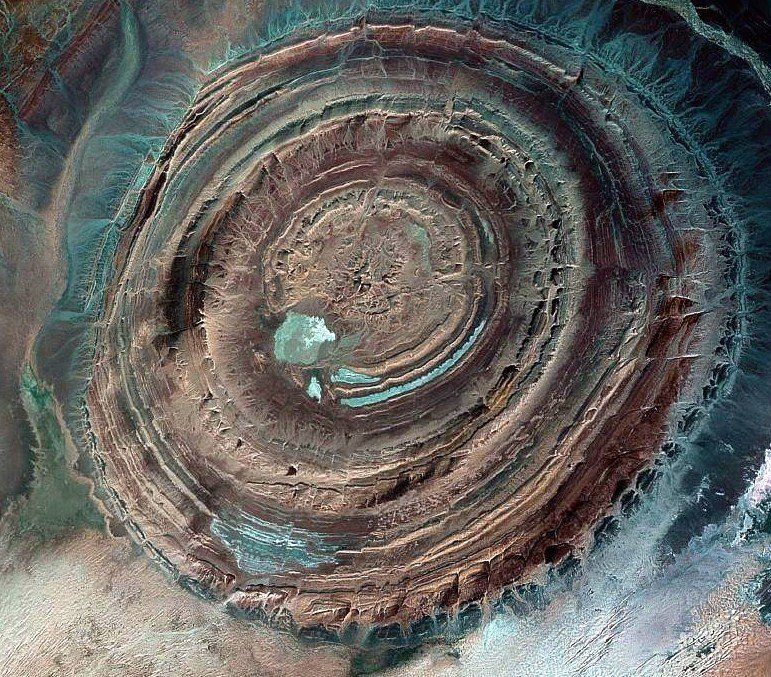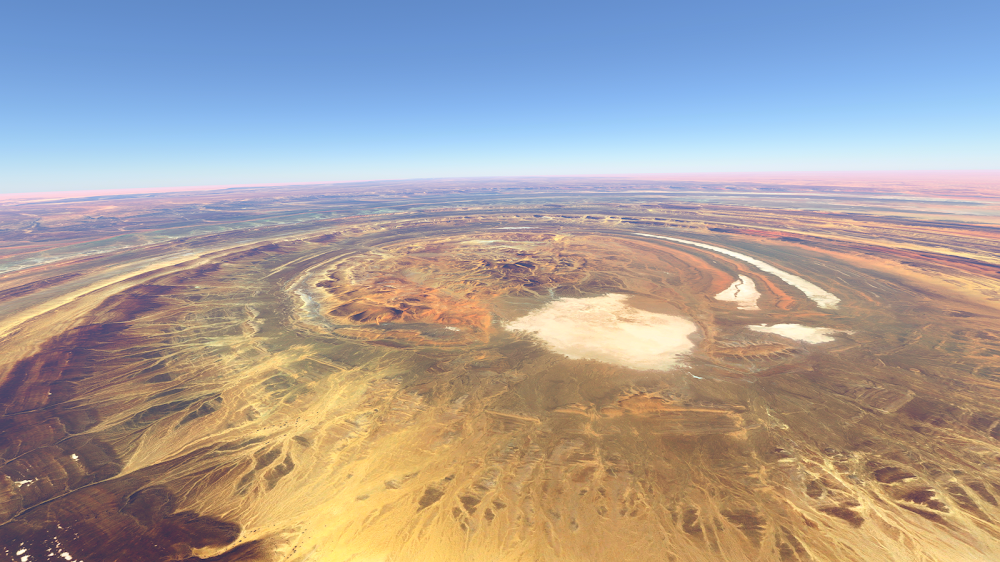Richat Structure (هيكل ريشات)
Overview
The Richat Structure, commonly known as the Eye of the Sahara, is a breathtaking geological marvel nestled in the heart of the Sahara Desert in Mauritania, near the historic city of Ouadane. This remarkable formation, which spans approximately 40 kilometers in diameter, boasts a striking resemblance to a giant circular eye when viewed from space, making it one of the most captivating and enigmatic natural features on our planet.
Geologists have been fascinated by the Richat Structure for decades, drawn to its unusual and nearly perfect circular shape. Initially thought to be the result of a meteorite impact due to its impressive size and form, further research has debunked this theory. Instead, scientists now believe that this geological wonder is a deeply eroded dome, shaped by the forces of nature over millions of years.
The formation of the Richat Structure began over 100 million years ago during the Late Cretaceous period. Volcanic activity pushed molten rock upward, creating a dome-shaped uplift. As time passed, erosion gradually wore away the upper layers of the dome, exposing the underlying structures. The visible rings today are a result of differential erosion, where softer rocks eroded more quickly than their harder counterparts, resulting in the concentric circles we see now.
Comprised primarily of sedimentary rock such as limestone, sandstone, and shale, the Richat Structure's geology tells a story of ancient seas long before the dome's formation. At its center lies igneous rock, a testament to the volcanic activity that initially created the uplift. Dating of the exposed rocks reveals they are between 100 million and 500 million years old, spanning several significant geologic periods.
Adding to its allure, the Richat Structure is home to various minerals, including quartz and hematite, remnants of the volcanic activity that helped shape it. The outer rings, composed of softer rock, have eroded more significantly, forming valleys, while the harder central dome remains prominently visible, a striking contrast against the surrounding landscape.
The Richat Structure has inspired numerous local legends and theories, with some speculating it may be the remnants of the fabled lost city of Atlantis, described by Plato as a circular city that sank into the sea. While such tales are intriguing, there is no evidence to support these claims; the structure is widely accepted as a natural geological formation.
In recent years, the Eye of the Sahara has emerged as a favored destination for adventurous travelers and researchers alike. Despite its remote location, the site has garnered increasing interest from those eager to marvel at its beauty and delve into its fascinating geology. The structure is best appreciated from the air or through satellite images, where its immense scale and intricate patterns are most evident.
The Richat Structure serves as a natural classroom for geologists who continue to study its formation and the processes that have shaped it over millions of years. It provides a unique window into Earth's geological history and the powerful forces that have transformed our planet's surface.
In conclusion, the Richat Structure in Mauritania is a stunning testament to the power of natural geological processes. Its unique and intricate design has captivated scientists and explorers for decades. While its origins were once shrouded in mystery, modern geology has shed light on the formation of this magnificent feature. Whether viewed from the sky or explored on the ground, the Eye of the Sahara continues to inspire awe and wonder in all who encounter it.









